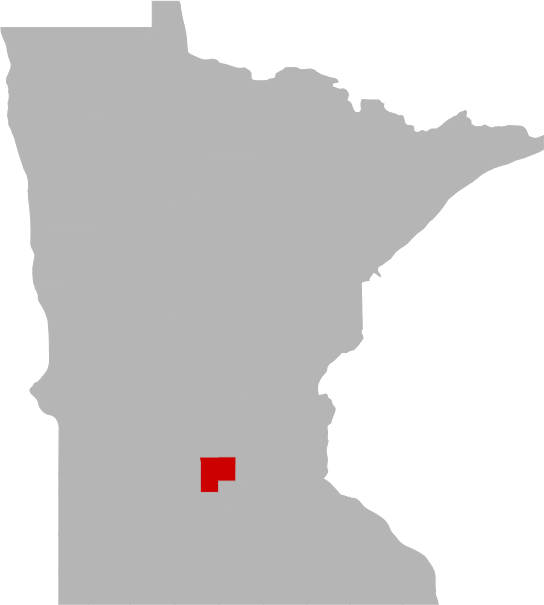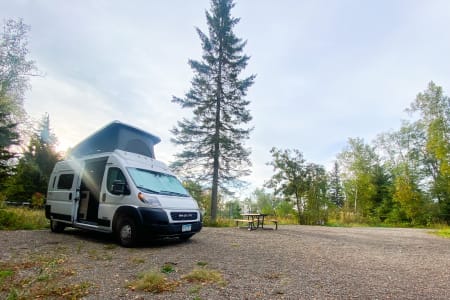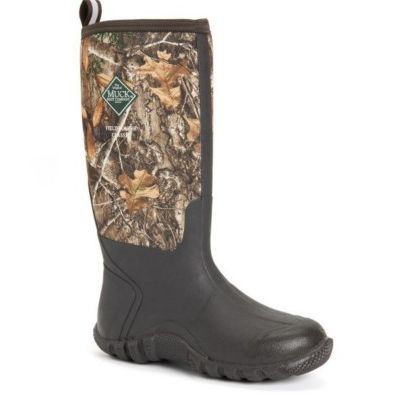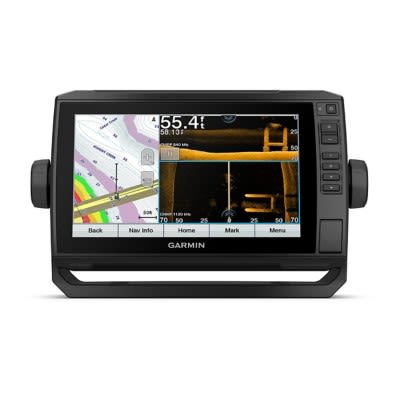Today's Best Fishing Times
Get the best fishing times for Otter Lake with Lake-Link's Fishing Forecast. SEE MORE


Share Your Catch & Win!
Frequently Asked Questions About Otter Lake, MN
- How big is Otter Lake?
- How deep is Otter Lake?
- What kind of fish can you catch in Otter Lake?
- Are there places to stay in the Otter Lake area?
- Are there boat launches on Otter Lake?
- Are there places to eat and drink near Otter Lake?
- What is the average air temp for Otter Lake?
How big is Otter Lake?
How deep is Otter Lake?
What kind of fish can you catch in Otter Lake?
Other fish species in the lake include Fathead Minnow, Golden Shiner, Green Sunfish, Hybrid Sunfish, Johnny Darter, Orangespotted Sunfish, Shorthead Redhorse, Spottail Shiner and White Sucker.
Are there places to stay in the Otter Lake area?
More Lodging Options
Are there boat launches on Otter Lake?
Are there places to eat and drink near Otter Lake?
Explore the Otter Lake area in a RV
Are you looking for an adventurous vacation option that won't break the bank? Look no further than renting an RV! Contrary to popular belief, the process is much simpler than you might imagine. With just a few easy steps, you'll soon be experiencing the ultimate freedom and convenience of exploring the open road in your very own recreational vehicle. And the best part? RV travel can save you up to 60% compared to other types of vacations! With the money you'll save, you'll be able to travel even more and create unforgettable memories along the way. So why wait? Start planning your next adventure today with an RV rental. Learn more about renting a RV.


2020 Lightning Aluminum Enclosed 5-place Snowmobile Trailer
Lakeville, MN


History & Status of the Fishery
A full resurvey was conducted at Otter/Campbell Reservoir in 2012 to monitor the physical, chemical, and biological characteristics of the system. A total of 15 species were sampled in the gill nets and trap nets. The old dam, at the outlet, was replaced with a rock step type structure around 2009. This new structure may be responsible for the increases in relative abundance of channel catfish, northern pike, and walleye. In 2012, shorthead redhorse were sampled for the first time at Otter/Campbell Reservoir.
The Otter/Campbell lakeshed (285,237 acres) was highly disturbed and dominated (83%) by row crop agriculture. The shoreline was heavily developed, with residential homes (189) making up the largest type of shoreline use (72%) in 2012. The lakeshed to lake ratio was 445:1. Aquatic vegetation was rated as rare. Only 2 varieties of submergent vegetation, Curlyleaf pondweed and sago pondweed, were sampled in 2012. The reservoir continued to be plagued by intense algal blooms and poor water quality. The secchi disk reading was only 1.4 feet on 6/25/12. The only shoalwater substrate that was classified as abundant was silt.
Gill nets sampled moderate numbers (53) of northern pike for a catch rate of 5.9/net, which was within the normal range for this type of lake. This was the second highest catch rate ever recorded at the reservoir. The 2005 catch rate was 0.8/net. Catch rates from 1975 to 2012 were variable, ranging from 0.8 to 9.1/net with an average of 3.8 and median (middle most data point) of 1.7. Historically speaking, recruitment could be classified as low. Gill netted northern pike were 14.2 to 31.8 inches long with an average of 21.9. Approximately 26% fo the gill net catch was 24 inches or longer, indicating a quality size structure. Northern pike were last stocked in 1992. Northern pike were age-1 through age-7 with 7 year-classes present. Age-2 and age-3 fish were the strongest year-classes, accounting for 26% and 35% of the gill net catch, respectively. Growth was somewhat slow. A summerkill of northern pike occurred in July 2012, when the water temperature climbed into the upper 80 degrees F range.
Trap nets sampled low numbers (35) of black crappie for a catch rate of 3.9/net, which was within the normal range for this type of lake. The 2005 catch rate was (8.7/net). Catch rates from 1975 to 2012 ranged from 0.7 to 14.0/net with an average of 6.1. Trap netted black crappie were 4.3 to 8.8 inches long with an average of 7.5. Gill nets sampled moderate numbers (88) of black crappie for a catch rate of 9.8/net, which was within the lake's normal range. The 2005 gill net catch rate was 1.7/net. Historic catch rates were mostly low, ranging from 0.0 to 9.8/net with an average of 2.8. Gill netted black crappie were 4.4 to 11.2 inches long with an average of 7.5. Black crappie were age-1 to age-5 with 5 year-classes present. Age-2 fish made up 54% of the gill net catch and 91% of the trap net catch. Growth was moderate. Black crappie were last stocked in 1992.
Trap nets sampled low numbers (7) of white crappie for a catch rate of 0.8/net, which was below the normal range for this type of lake. The 2005 catch rate was 1.8/net. Historic catch rates from 1975 to 2012 ranged from 0.0 to 14.0/net with an averae of 3.9. Trap netted white crappie were 7.9 to 13.0 inches long with an average of 10.5. Gill nets also sampled low numbers (18) of white crappie for a catch rate of 2.0/net, which was within the normal range for this type of lake. Historic catch rates ranged from 0.0 to 10.9/net with an average of 4.9. Gill netted fish were 4.9 to 13.5 inches long with an average of 8.1. White crappie were age-1 to age-4 with 4 year-classes present. Growth was fast. An easy way to tell the difference between white crappie and black crappie is to count the number of dorsal spines. White crappie have 5 or 6 spines while black crappie have 7 or 8 spines.
Gill nets sampled high numbers (129) of walleye for a catch rate of 14.3/net, which was above the normal range for this type of lake and the highest ever recorded. The 2005 catch rate was 6.0/net. Catch rates from 1975 to 2012 were variable, ranging from 0.0 to 14.3/net with an average of 6.0. Gill netted walleye were 7.5 to 22.6 inches long with an average of 16.1. Approximatley 87% of the gill net sample was 13 inches or longer, indicating a quality size structure. Walleye were age-1 to age-6 with 6 year-classes present. The 2009 and 2010 year-classes were both ranked as strong, accounting for 56% and 24% of the catch, respectively. Walleye were last stocked in 1990. In 2012, growth was fast. Anecdotal reports indicated that there was a significant amount of fishing pressure during the summer, fall, and winter of 2012, on the reservoir, with fair to good success for walleye.
Gill nets sampled high numbers (67) of channel catfish for a catch rate of 7.4/net. The 2012 catch rate was over 24 times greater than the previous high catch rate (0.3/net in 2005). Historic catch rates ranged from 0.0 to 7.4/net with an average of 1.6. In 2012, channel catfish were 6.7 to 27.2 inches long with an averge of 14.3. Channel catfish were age-1 to age-10 with 8 year-classes present. The 2010 year-class accounted for 50% of the gill netted fish that were aged. Standard shoreline seining sampled 6 young-of-the-year channel catfish, which likely indicated that fish were spawning successfully within the reservoir.
Trap nets sampled low numbers (6) of bluegill for a catch rate of 0.7/net which was below the normal range for this type of lake. The 2005 catch rate was also low (3.2/net). Historic catch rates from 1975 to 2012 were mostly low, ranging from 0.0 to 9.7/net, with an average of 2.3. In 2012, trap netted bluegill were 6.1 to 7.6 inches long with an average of 6.6. Bluegill were age-3 to age-5 with 3 year-classes present. Growth was moderate to fast. Young-of-the-year bluegill (2,327) were the most abundantly sampled fish from the shoreline seining portion of the assessment. Winterkill and a lack of submergent vegetation were likely major limiting factors on this species.
Gill nets sampled low numbers (6) of largemouth bass for a catch rate of 0.7/net, which was within the normal range for this type of lake. Gill netted largemouth bass were 6.9 to 14.2 inches long. Trap nets sampled 2 largemouth bass, up to 15.2 inches in length. Largemouth bass were age-1 to age-4 with 4 year-classes present. Growth was fast. Winterkill and a lack of submergent vegetation were likely major limiting factors on this species.
Gill nets sampled low numbers (12) of yellow perch for a catch rate of 1.3/net, which was below the normal range for this type of lake. The 2006 catch rate was similar at 4.9/net. Catch rates from 1975 to 2012 were mostly low, ranging from 0.8 to 18.7/net with an average of 5.4. Yellow perch were 5.5 to 9.7 inches long with an average of 8.1.
Trap nets sampled high numbers (36) of carp for a catch rate of 4.0/net, which was above the normal range for this type of lake. Historic catch rates from 1975 to 2012 were mostly high, ranging from 0.5 to 47.3/net with an average of 16.7. Trap netted carp were 14.3 to 32.1 inches long with an average of 20.1. Gill nets also sampled high numbers (67) of carp for a catch rate of 7.4/net, which was above the lake's normal range. Historic catch rates were all high, ranging from 7.2 to 34.9/net with an average of 13.6. Gill netted carp were 8.3 to 27.4 inches long with an average of 18.7. High numbers of carp, over the last 35+ years, have likely had significant negative impacts on submergent plant abundance and water quality in Otter/Campbell Reservoir.
Gill nets sampled high numbers (603) of black bullhead for a catch rate of 67.0/net, which was within the normal range for this type of lake. The 2012 catch rate was the second highest on record, going back to the 1975 assessment. Historic catch rates from 1975 to 2012 were mostly moderate to high, ranging from 28.7 to 96.3/net with an average of 55.1. Gill netted black bullhead were 4.7 to 18.3 inches long with an average of7.5. Trap nets sampled low numbers (59) of black bullhead for a catch rate of 6.6/net, which was within the normal range for this type of lake. The majority of the fish were too small to appeal to bullhead anglers. In recent years, many area lakes have experienced a decline in black bullhead abundance, but not the reservoir.
Additional species sampled in the standard gear included; bigmouth buffalo, brown bullhead, white sucker, and yellow bullhead.
Otter/Campbell has a long history of winterkill and the reservoir was opened to liberalized fishing as recently as 2009. Winter dissolved oxygen concentrations were very low in all three sections of the reservoir during the 2012-2013 winter. Dead fish were reported just above the dam in early March, 2013. Fish populations can vary greatly from year to year, depending on the frequency and severity of winterkill.
What is the average air temp for Otter Lake?
More Nearby Lakes To Explore
There's more lake's to explore around Otter Lake...| DISTANCE | ACRES | MAX DEPTH | |
| French Lake | 4.2 mi | 42 | 23 ft |
| Stahl's Lake | 4.8 mi | 141 | 37 ft |
| Lake Hook | 5.2 mi | 330 | 18 ft |
| Belle Lake | 6.6 mi | 864 | 25 ft |
| Cedar Lake | 6.7 mi | 1,860 | 8 ft |
| Lake Marion | 6.8 mi | 520 | 15.2 ft |
| Swan Lake | 8.1 mi | 352 | 10 ft |
| Hoff Lake | 8.1 mi | 139 | 8 ft |
| Lake Jennie | 8.4 mi | 1,064 | 15 ft |
| Lake Erie | 8.6 mi | 190 | 34 ft |
















